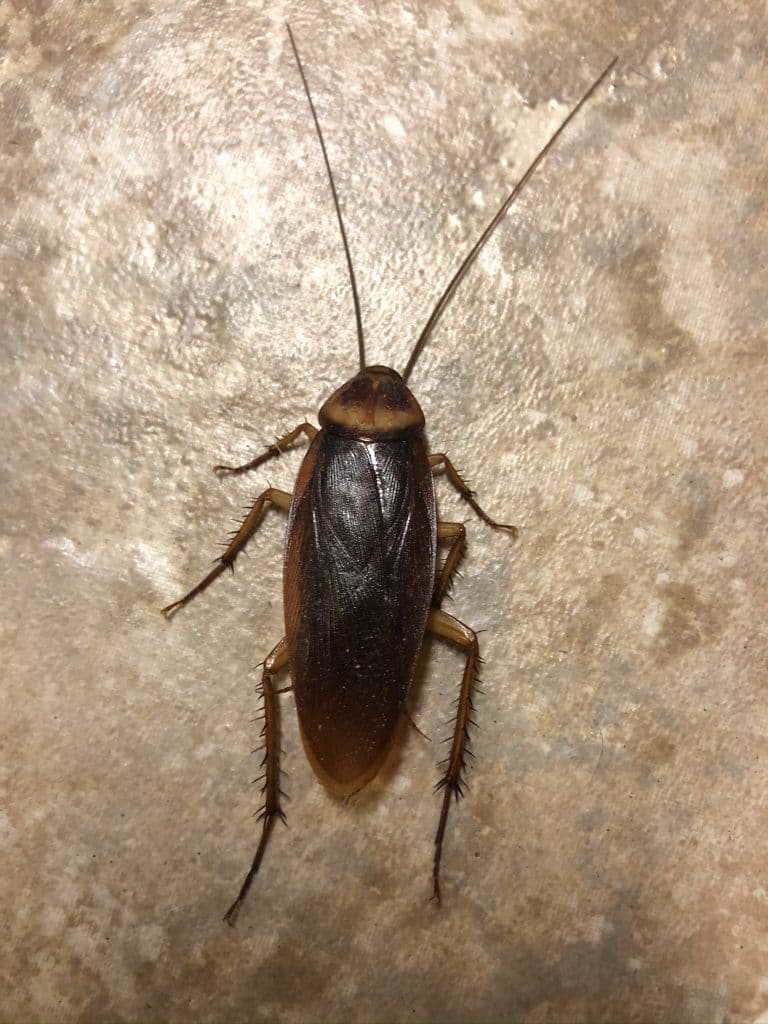Roaches are one of the most maligned groups of insects in our lives. That is because they are often in our homes, where we really don’t want them to be. Like house flies, they crawl over our food and leave trails of “droppings” that elicit gasps and often a call for the man of the house to expel them, underfoot, helping the screaming to subside.
However, the most common roaches in our lives are in our houses for a reason. All three of these cockroaches are exotic, having come to this country centuries ago (1600’s) from faraway lands by way of ships that carried people and cargo from Europe and Asia and slaves from Africa. All three evolved in tropical climates and do not do well in our temperate zone, so they seek the comfort of warm buildings. The term for this association is domiciliary (a nice technical word).

But the worst of the worst for most of us is the German Cockroach! This smaller insect is gregarious and believed to have a social hierarchy within colonies. The name is misleading, as this insect is also believed to be from Southeast Asia. It is by far the most troublesome from a health perspective, especially in restaurants.
On occasion, you might also spot a light green roach of the same size and shape, attracted to porch lights but seldom coming into homes – the Cuban Cockroach.
So now you know your cockroaches, at least the largest of the nearly 50 species known from North America. So, the next time you see one, you can scream intelligently. “Yikes, an American Cockroach!” Or, you can go with the much simpler Spanish term, “Yikes, a Cucaracha!!!
Hope to see you in our great outdoors!